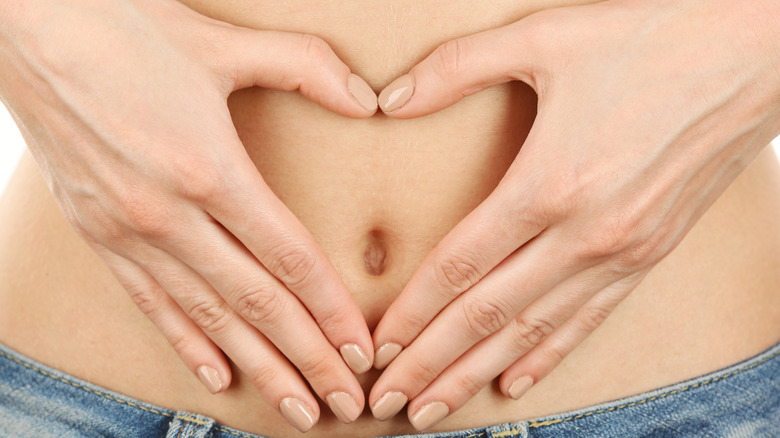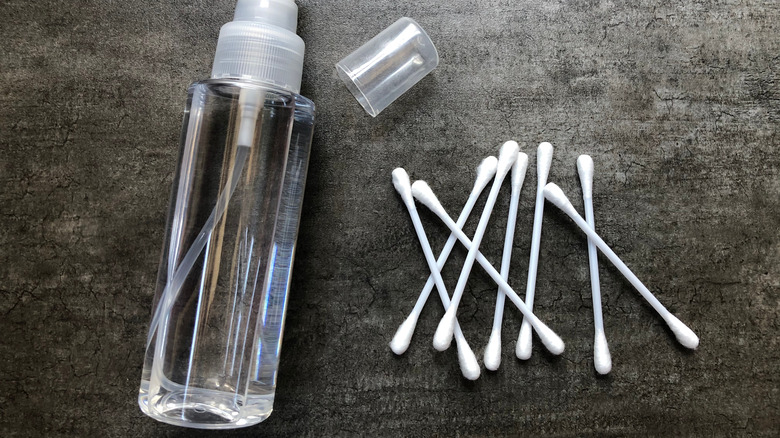How And Why You Should Be Cleaning Your Belly Button
Did you know that, according to a 2012 study published in PLOS One, your belly button is home to nearly 2,370 bacteria species? What's even more surprising is that different individuals have different microbes in their navels, including rare or uncommon species. The most common bacterial strains identified in the study were Klebsiella, Staphylococcus, Bacillus, and Enterobacter.
"The belly buttons reminded me of rain forests," said biologist Dr. Rob Dunn, the project's leader, in an interview with the National Geographic Society. "This biodiversity is critical to the functioning and health of our ecosystems — be that on our skin, or our forests and streams," explained entomologist, Dr. Holly Menninger, to the publication.
The microbes living in your navel are not necessarily harmful, but they can multiply and cause all sorts of issues. Over time, you may develop bacterial or fungal infections and other problems responsible for belly button discharge and odd smells, warns Healthline. Dirt buildup only makes things worse. Over time, these residues can harden and form a belly button stone, said Dr. Karan Raj on his TikTok channel. "Belly button stones come in a wide array of colors — they're usually black but can be a light brown," he added.
What's the best way to clean your belly button and how often should you do it? Let's find out.
Here's the right way to clean your navel
Cleaning your navel isn't the most exciting thing to do, especially if you have omphalophobia, or fear of belly buttons (per Healthline). This habit, however, is essential for preventing infections and other issues. There's nothing to worry about when it comes to touching your belly button. The navel is just a scar — it doesn't have a functional role, explains the University of Pittsburgh Medical Center (UPMC). However, you do need to keep it clean and remove any lint, sweat, and other residues as needed.
First, mix a teaspoon of salt into a glass of water. Dip a soft washcloth into this mixture and then gently massage your navel, per UPMC. If you have a belly button piercing, press the washcloth against your skin to loosen the debris. Always use a saline solution and steer clear of creams and lotions. When you're done cleaning, rinse your belly button with water and remove excess moisture with a napkin. Alternatively, you can use your index finger or a cotton swab to clean your navel.
Repeat this process as often as necessary. Good Housekeeping suggests cleaning your belly button at least once a week, but there are no set rules on how often you should do it. If you're the active type, your navel may need more frequent cleaning. Also, call your doctor ASAP if you notice any signs of infection, such as belly button discharge, inflammation, redness, or foul odors, says UMPC.


